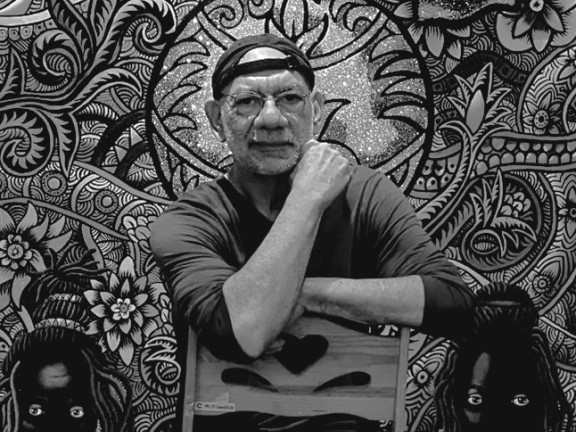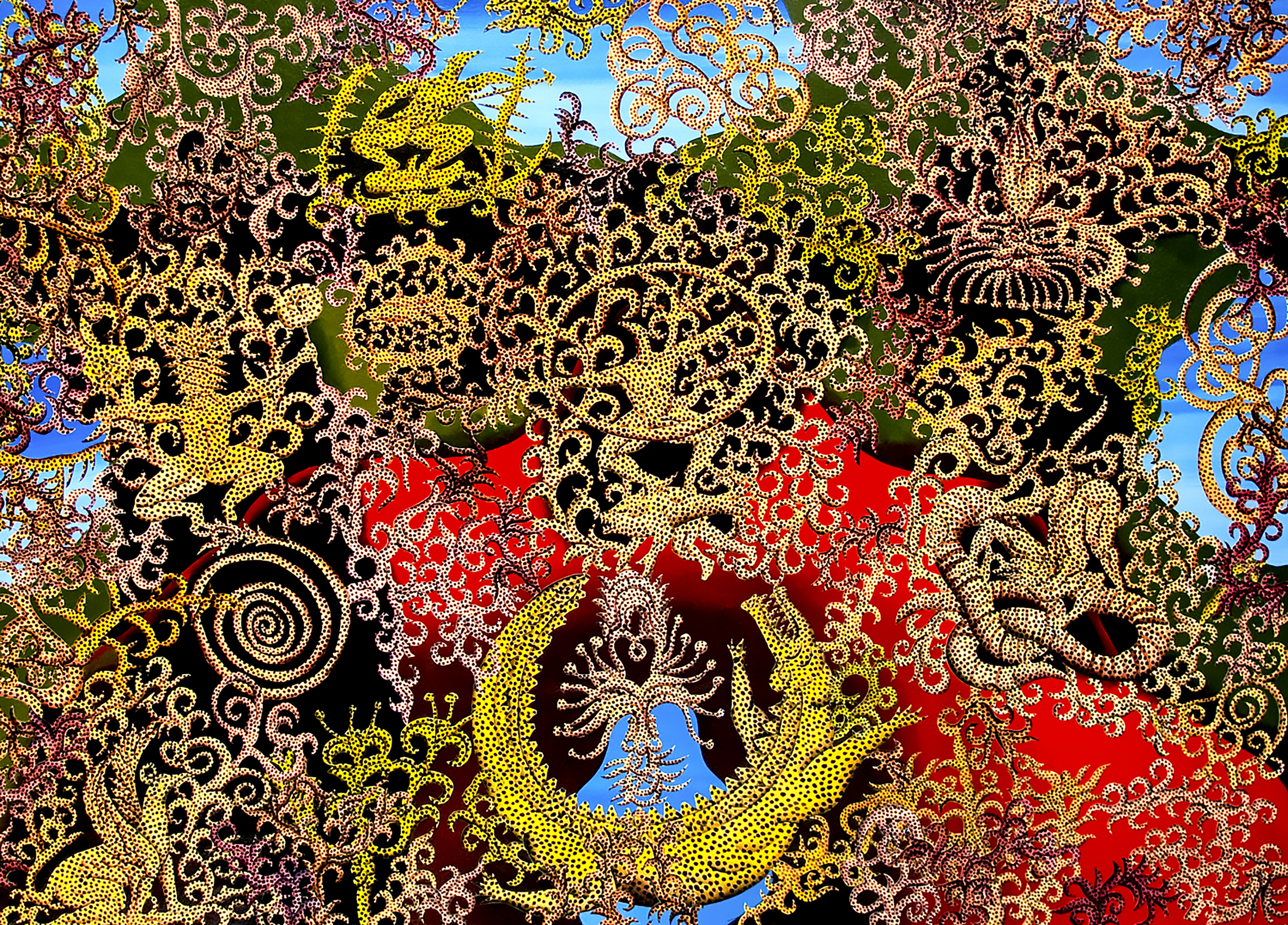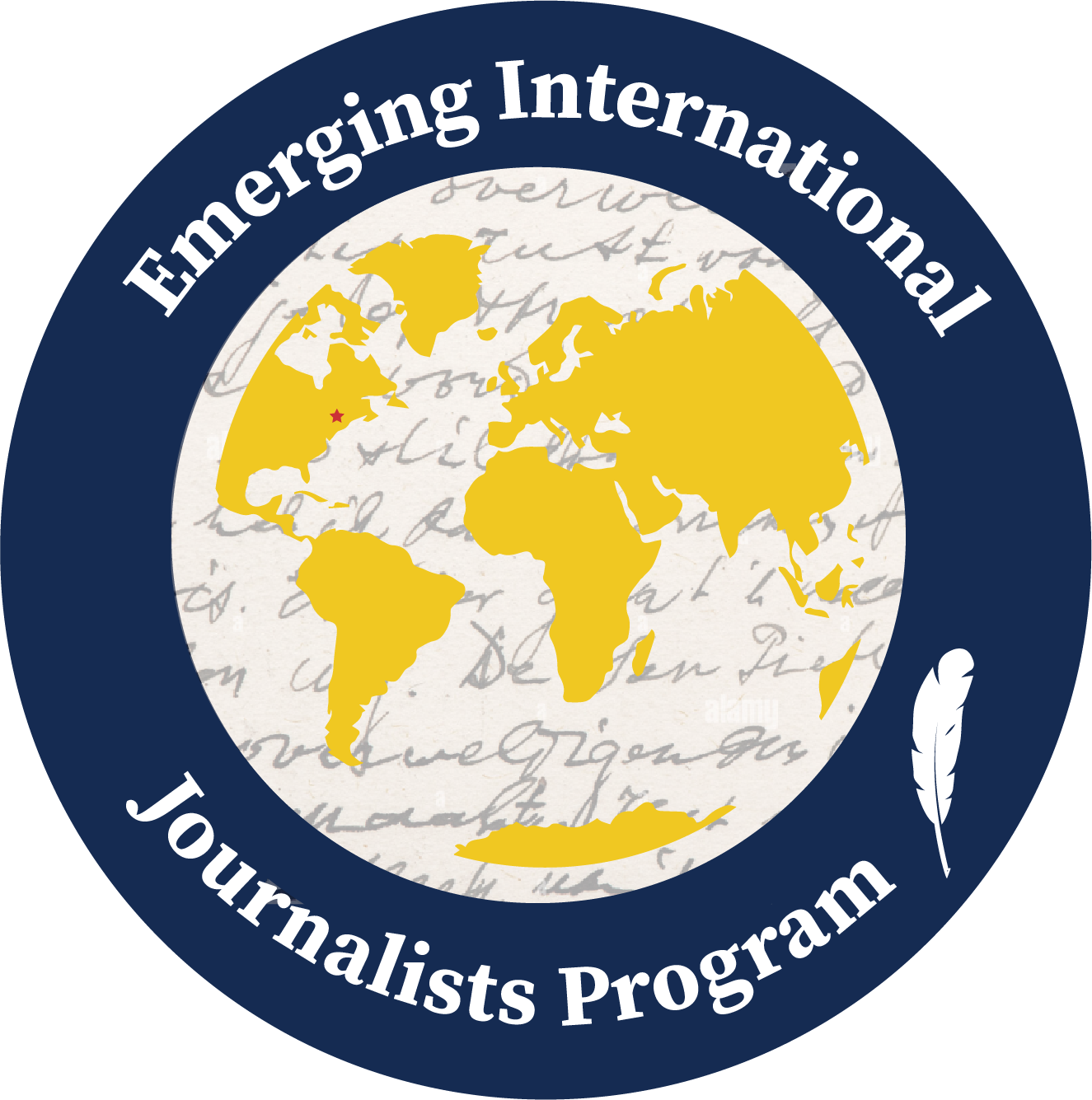A Global Conversation with Henry Bermudez

Henry Bermudez, a Philadelphia-based contemporary artist originally from Venezuela, has spent years developing his art form and sharing his ideas with the world through his art. His artistic journey has led to an unexpected fusion of ideas, shaped by his cultural experiences in Venezuela, Italy, Mexico, and The United States. With his earliest inspirations coming from his time spent in Borbures, Venezuela, a quaint village with imaginative, multicultural mythologies, Bermudez continued developing his art through art education in New York and Rome. He is heavily inspired by Renaissance art, but his artwork portrays the inspiration he gained from his experiences and the mythologies he learned about around the world.
In 2003, Bermudez sought refuge in the United States when the Venezuelan political regime deemed his work and the ideas it presented to be a threat to their cultural authority. His art continued to develop through this political turmoil, expressing themes of displacement and influence of worldly cultures. His meshing of colonialism, religion, and mythology as themes in his work reveals breathtaking pieces of art for his audiences.
This year, Woodmere Art Museum is displaying the largest collection of Bermudez’s art to ever be shown in a gallery, depicting his long artistic journey and cultural perspectives. The exhibition at Woodmere, Henry Bermudez in Philadelphia, showcases his array of unique art that portrays his experiences leading up to and during his time in Philadelphia as an immigrant. The exhibit opened in February and runs through May 19th.
Madi Costigan: Your artistic journey seems to be deeply influenced by your experiences in various cultural settings, particularly in the Amazon and Mexico. How have these experiences shaped your artistic vision and the themes you explore in your work?
Henry Bermudez: As an artist, I have had experiences that influence me, and I used these influences to take the ideas that I needed for my work. For example, before I went to Mexico, I was living in a very small town in my country called Borbures de la Costa. This is a very little town that was created by African descendents when they became free from slavery in the middle of the jungle, so they used the cultural similarities with the one that they have in Africa. So that influenced me a lot. Then I had the opportunity to go to Mexico and whatever I learned from Borbures was connected with Mexico. Little by little, I was interested in and finding my path into the art field, and I understood all the collective mythology that I was supposed to.
Could you elaborate on how your time spent in Borbures, a small Afro-Caribbean village in Venezuela, influenced your understanding of myths and storytelling, and how these elements manifest in your art?
Talking about Borbures, it is a very small town, maybe 1,000 people or less, and they have these ceremonies, dances, and religions, where they mix the idea of deities of Africa with Christianity. The saint that they pray to is called Saint Benito, who is an African saint. They mixed the saint from the Catholic church with the African deity they have, so that gave me the ideas.

Your work often combines elements from different cultural heritages, including pre-Hispanic, Judeo-Christian, and Afro-Caribbean influences. When designing the art instruction program with Philadelphia students, how do you teach navigating the complexities of merging diverse cultural narratives in art?
I always talk to my students about these experiences to try and make them understand that there are other realities and other cultures that they can really investigate and research, to become a little more aware of the varieties outside of our environment. I talk to my students about how I have applied all of these images that I have learned in these different places and how they converge from simple ideas of feelings into art. So, we experiment with the idea of creating images from a myth. I tell them a myth, and I ask them, “How do you interpret this in art? Make some figure, some form, from this idea, this myth.” So I talk to them about the saint that was protecting the African descendents in the jungle and all of these other mythological tales.
The art program with local students aims to provide art education to district schools without the funds for art programs. Why is art education important and necessary, particularly for young students?
When I talk to my students about the importance of art, I always try to explain to them or describe how art is going to help them in real life. I say to them, “We don’t have a lot of chances to experiment with our spirituality, our creativity. So, in this class, it is the only class where you don’t have to remember, you don’t have to study; the only thing that you have to do is feel, to feel your emotions. I am going to give you an idea and you are going to feel this idea and express it in form, in colors, in shapes, in lines.
And remember, when you are a professional or you go to university and find your career, not all of the responses are in the manual. Many of the responses you have to create. There are so many problems that you have to solve without the manual, you have to be inventive, you have to create solutions. And this class is to help you create images to open your mind. Think out of the box and create solutions and possibilities.”
Your artistic practice involves various mediums such as paint, glitter, cardboard, fabric, and cut paper. How do you choose which medium to use for a particular piece, and how does the choice of medium contribute to the narrative of your artwork?
Depending on what I feel, in my mind, what I’m thinking about any specific idea, because the process of creating art, talking about me very particularly, I think, I feel something, and I start building this idea in my mind until I see it more or less complete. When I see it more or less complete, I am going to see what medium I am going to use. For example, when I use fabric, I want to make some installations. When I use elements where there is no painting, no drawings, I use objects that I hang or put on the floor, separated. When I’m going to paint, I use acrylic, oil, canvas, or plywood. When I’m going to draw I use paper or another material like cardboard or something more related with papers. Now, I am making sculptures using plywood. First, I draw the plywood, I cut the plywood, and I smooth all the textures by sanding it, then apply the first cup of paint and start painting on it. It is totally 3D; they are sculptures. Everything depends on the project.
As an immigrant artist, how do you think your experience of displacement and cultural adaptation informs your artistic process and the themes you explore in your work?
As an immigrant, I try to adapt myself to the reality where I am living. I had the opportunity to live in many places and try to integrate. For example, when I was living in Mexico, I needed to talk like Mexicans, because when I went to the market to buy my groceries, I knew that if they realized I was foreign, they were going to ask me for more money. I had to create the same feeling and get the same opportunity that they gave to the Mexican natives. I try to understand their culture and I want to integrate just to be a part of that culture. I tried to feel and think in the same way that they did.
When I went to live in New York, it was a little easier. I didn’t speak English in those days so I was integrated with the Latin American community members there. Most of my friends were from Venezuela or Colombia, and we spoke the same language, we had the same principles, and we had the same ideas about many things. But New York was a myth, a city where it was up to you what you did. So, we wanted to create the maximum of everything, the most important galleries around the world, the most expensive, the most beautiful and important museums. So, the basic idea was it was up to you in New York, so I created the idea of a myth, and I used that for my own art.
Then, I moved to Rome. In Rome, I had to study Italian. That was very easy for me because it is very familiar for Spanish speakers. I also connected with Renaissance art. This influenced my painting enormously. For me, knowing the compositions I do and the many, many mythological tales that I used from being in Rome and being connected with all of these paintings, Michelangelo, Rafael, all of these great artists, really changed my style and my way of seeing art from that moment on.
In what ways do you hope your art influences people to think globally, especially in terms of promoting cultural diversity and inclusivity within the community?
I have seen this year in Philadelphia, with my show in Woodmere, how people respond to all of this art and see how it is related to so many topics and so many points of view, how they connect with that. I think my art enriches the vision of Philadelphia. I’m participating in a group of artists who are making a process of understanding new visions, new ideas, and new points of view.
Henry Bermudez's exposition will be on display at the Woodmere Art Museum until May 19, 2024.
Woodmere Art Exhibit - educational art program with Philadelphia school district schools.
This event is a partnership between GPA and Woodmere to offer art education to district schools. Through this program 8 schools (Esperanza Charter, McClure, Solis Cohen, Lingelbach, Kennedy Crossan, Spring Garden, Shawmont, and Jenks Academy) are given art instruction through the spring and participate in an art gallery opening during World Heritage Week. Woodmere is also given a grant and copies of our heritage coloring book for use through the program.
This program is a collaboration with Henry Bermudez whose art will be showcased through May 19th.



